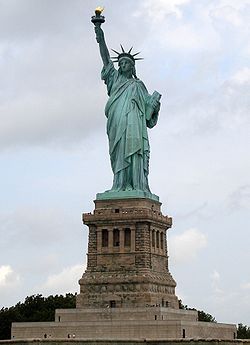“Punting the Pundits” is an Open Thread. It is a selection of editorials and opinions from around the news medium and the internet blogs. The intent is to provide a forum for your reactions and opinions, not just to the opinions presented, but to what ever you find important.
Thanks to ek hornbeck, click on the link and you can access all the past “Punting the Pundits”.
Follow us on Twitter @StarsHollowGzt
Dean Baker: Rich People’s Rules and the TPP
Congress gave the American people and the world something to celebrate last Friday. The House of Representatives refused to pass the package of bills that would have given President Obama fast-track authority for the Trans-Pacific Partnership (TPP). This was a huge victory for a campaign led by labor unions, environmentalists, consumer groups and other activists against the country’s biggest corporations.
A victory by the masses, or “everyday people,” over big money and big media is always grounds for celebration. But it is important to remember the game is far from over. This is one of those bills, like the TARP, where we are playing by rich people’s rules. [..]
The Bush administration and the congressional leadership regrouped and came back for a second shot. They reworked the bill some and added a package of sweeteners to win over members vote by vote. My favorite was a special tax break for producers of toy arrows. This second bill got an easy majority in the Senate and then the House buckled, as all the major news outlets promised a Second Great Depression if the bill didn’t pass.
That is how rich people’s rules work. Needless to say we will see lots of sweeteners floating around Congress as the Obama administration and Speaker Boehner struggle to get the additional votes needed to pass fast track. It will take serious pressure from the public to keep members from flipping.
Rep. John Conyers: Why the TPP Is a Terrible Deal for Most Americans
Trade agreements boost economic growth, while destroying lives and livelihoods.
Earlier this year, former Florida governor Jeb Bush travelled to my hometown of Detroit to explain his political philosophy. In a speech before local business leaders, Bush argued that the aim of government should be to promote “economic growth above all.”
“If a law or a rule doesn’t contribute to growth,” he asked, “why do it?” If a law subtracts from growth, why are we discussing it?”
The younger Bush brother is in good company. For the better part of a century, economic growth-as measured by the Gross Domestic Product (GDP)-has been the single most important guidepost for government decision-making. Nowhere is this clearer than in the current debate raging in Washington over the 12-nation Trans-Pacific Partnership (TPP) trade agreement, wherein the deal’s proponents from the Chamber of Commerce to the Treasury Department routinely reach for their trump card: “Trade is good for economic growth.” [..]
As the House considers whether to “fast track” the TPP and other coming trade deals, I hope my colleagues will consider a broader set of questions than the one that Jeb Bush presented during his visit to Detroit. Instead of asking about implications for economic growth, I hope my colleagues ask: “Is this policy good for living standards? For the health of the planet? For creating jobs with dignity, promoting peace, and ensuring an educated populace?”
It’s hard to imagine the TPP passing muster when we consider values other than economic growth.
New York Times Editorial:
Sticker Shock in For-Profit Hospitals
Two reports published this month provide fresh evidence of the hard-to-justify high prices that many hospitals charge for common procedures. The prices drive up premiums for many privately insured patients and can be ruinously expensive for those who are uninsured or inadequately insured or who go to a hospital or doctor outside their insurance network.
A study published in the June issue of Health Affairs, a policy journal, found that the 50 hospitals with the highest prices in 2012, the latest data available, charged an average of 10 times what is allowed by Medicare, which was used as a baseline for cost. Although hospitals routinely complain that Medicare pays too little, the allowable charges under Medicare are what the government, after extensive analysis, considers the cost of the procedure plus a reasonable amount to invest in hospital improvements and keep up with medical inflation. [..]
High prices will hit millions of people who will remain uninsured in coming years for one reason or another despite passage of the Affordable Care Act, according to the Health Affairs study. Patients with private insurance who receive care out-of-network don’t generally benefit from their insurer’s negotiated discounts may have to pay a high proportion of the full charges.
David Sirota: Has America Changed Since Edward Snowden’s Disclosures?
Two years ago this month, a 29-year-old government contractor named Edward Snowden became the Daniel Ellsberg of his generation, delivering to journalists a tranche of secret documents shedding light on the government’s national security apparatus. But whereas Ellsberg released the Pentagon Papers detailing one specific military conflict in Southeast Asia, Snowden released details of the U.S. government’s sprawling surveillance machine that operates around the globe.
On the second anniversary of Snowden’s historic act of civil disobedience, it is worth reviewing what has changed-and what has not.
On the change side of the ledger, there is the politics of surveillance. For much of the early 2000s, politicians of both parties competed with one another to show who would be a bigger booster of the NSA’s operations, fearing that any focus on civil liberties risked their being branded soft on terrorism. Since Snowden, though, the political paradigm has dramatically shifted.
Eugene Robinson: You Can Call Him Jeb!
Substituting an exclamation point for his inconvenient last name, Jeb! has officially entered the presidential race. Why isn’t everyone else quaking in fear?
I can see why Hillary Clinton, the Democratic front-runner who also downplays a familiar surname, might welcome Jeb Bush’s candidacy. If the general election is Bush versus Clinton, the dynasty issue becomes a wash. Americans would just have to deal with the fact that these two families are never, ever going away.
But while Clinton looks like a lock to win her party’s nomination, at this point Bush-who unveiled his Jeb! campaign logo Sunday-can’t even be considered the favorite to win his. He is certainly in the top tier of GOP candidates, and his fundraising prowess may eventually wear down his rivals. But all Bush managed to do in the long pre-announcement phase of his campaign was to send his polling numbers into a swoon.
Harvey Wasserman: Could John Kasich’s Anti-Green Legacy Propel Him to the White House?
Ohio’s Republican Gov. John Kasich has joined the 2016 herd: He has declared himself a candidate for the presidency.
But he may very well get the vice presidential nomination instead.
He may very well also be America’s most anti-green governor.
Kasich is an inveterate maverick. He recently created a characteristic stir by saying he would not have invaded Iraq. Over the decades he’s been a “budget hawk” congressman, hard-right Fox commentator, Wall Street speculator and now a second-term governor of the Buckeye State. Edgy and unpredictable, he’s gone against the GOP grain by supporting Medicaid and occasionally preaching compassion for the sick and the poor.
All of which could make him unacceptable for the GOP presidential nod.
But his stance on the environment is another story.







Recent Comments